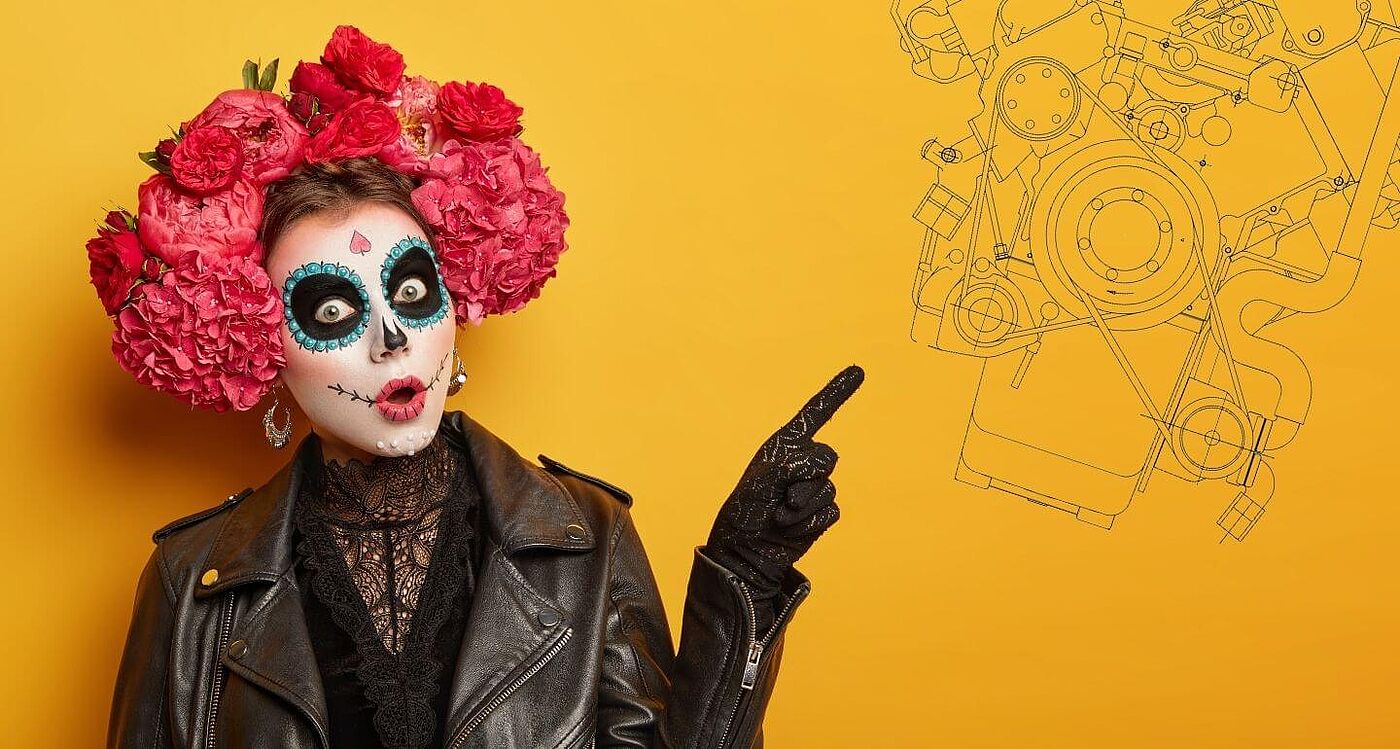
Everyday IP: Seven bizarre and hilarious patents
At Dennemeyer, we take patents and Intellectual Property (IP) very seriously. Still, even a dyed-in-the-wool professional would be hard-pressed to keep a straight face if presented with any of the following inventions.
Those of us in the IP world spend so much time focused on pivotal and lucrative inventions that it is easy to forget just how many patents are granted for items that are not produced. So, in the spirit of Halloween mischief, we have dug up some of the strangest patents from recent and not-so-recent history. Most of these inventions would not be considered "scary," but they are certainly outlandish. We will begin with a very rude awakening.
The world's most painful alarm clock
Apparently, New Jersey-based inventor Samuel S. Applegate was uncommonly concerned about either his tendency to sleep through an alarm or others catching one too many winks, because his proposed solution was violent.
Applegate successfully patented a "Device For Waking Persons From Sleep" in the United States and Canada in 1882. It connected a wall-mounted alarm clock to a wooden frame suspending a set of light wooden blocks above the sleeper's head. When the alarm rang, the frame would drop, causing the blocks to hit the person in the face! As Applegate admitted in his patent application: "These cause pain."
Little else is known about Applegate. He did invent an electric doormat that would sound an alarm when stepped on (presumably to scare burglars), but no patent was granted.
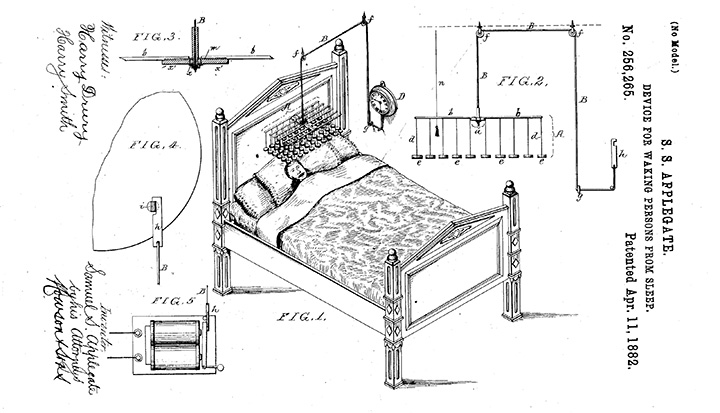
Pierced glasses ("pince-nez, but worse")
When we said most of the patents we would discuss in this blog were not chilling, this was the exception. A 2004 invention, patented by John Rose, took the concept of the pince-nez — old-fashioned eyeglasses that pinch the nose to stay in place — and made it into something horrific by using studs that pierced through the nose. The drawings in Rose's patent application are truly the stuff of nightmares, so our sympathies extend to the misfortunate examiners.
It was ostensibly possible to buy these in the 2000s, but the invention's website is now defunct. Hopefully, any customers that bought them knew what they were letting themselves in for.
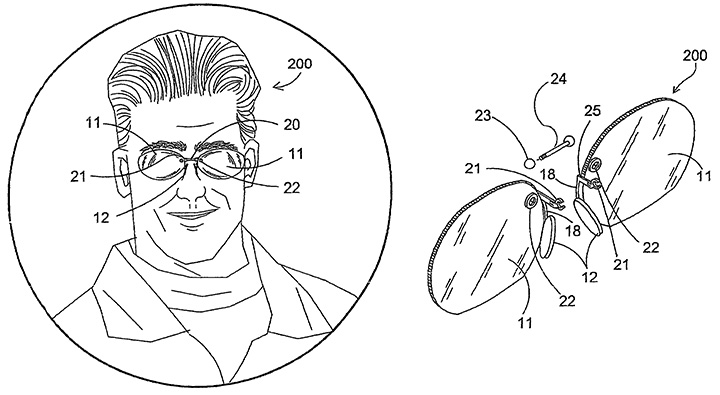
The "greenhouse helmet"
While it is undoubtedly true that many of us could stand to spend more time in nature, is Waldemar Anguita's 1986 invention really the way to do it?
The device Anguita called a greenhouse helmet consists of a transparent dome-like headdress made of an unspecified "anti-fog material," air filters, hearing devices and miniature shelves on which small, potted plants would be mounted on the inside. In the abstract, Anguita described the invention's benefit as "[breathing] in the oxygen given off by the plants." For obvious reasons, you would be limited to cacti and other succulents, or perhaps tiny flowers. Take note: If you wore it to a Halloween party, it could be a big hit! *
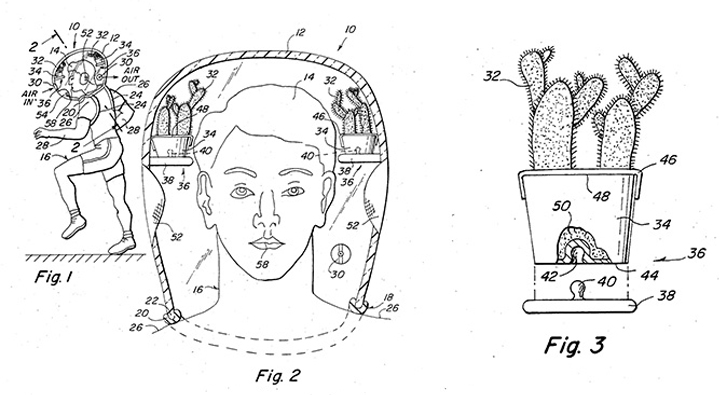
A weatherproof Halloween costume?
Speaking of ungainly fashion, and not necessarily from experience, wearing a large and elaborate costume can be pretty uncomfortable. Problems with overheating and difficulties in breathing and moving freely only mount with prolonged use. Rod Spongberg's 2002 invention aimed to change that, as it was designed to offer either ventilation or insulation according to the weather conditions. In theory, it could be adjusted to the dimensions of any character costume one could wear. Perhaps it would be best not to take one's cues from the patent drawings, which depict a somewhat offbeat elephant.
Although toy and doll company Chosun International was granted patent rights to this invention, it is unclear whether they manufactured it. If so, perhaps some lucky sports-team mascots were able to get their mittened hands on them.
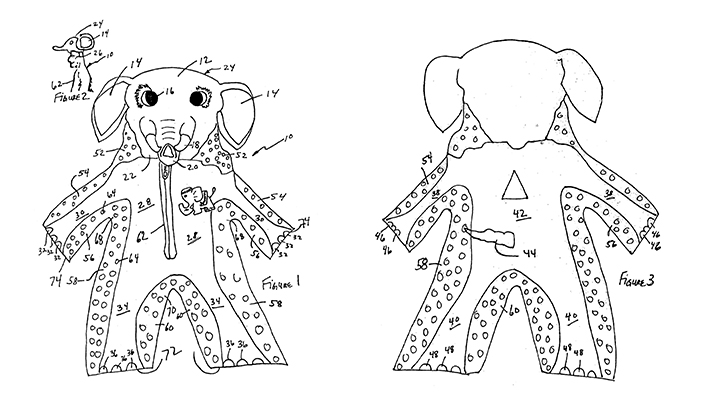
The cork swimsuit
From one garment to another, with an inventor bearing an equally memorable name. Whether Paschal Plant's curious swimwear ever made it to the beach or not, it has certainly raised a few eyebrows. Imagine a bathing suit from yesteryear, with full coverage of the body's trunk together with short sleeves and legs… except made of cork pieces woven together with string. Cork seems to have been the 1880s' wonder material de jour, given Applegate's use of it in his "alarm clock."
Theoretically, the cork suit allowed for easy movement and aided flotation due to its natural buoyancy, but one doubts the 1882 invention made much of a splash.
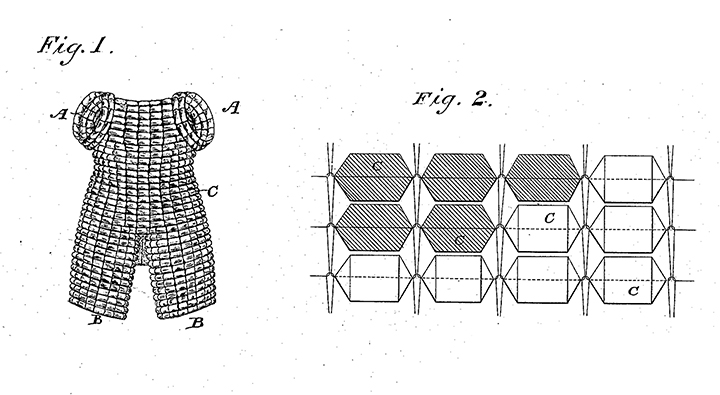
The magic 8-ball sprouts new life
With this invention, patented by Richard Bruce Bernardi II, you combine the concept of the fortune-telling 8-ball with – naturally enough – the joy of gardening. The user plants a seed in a soil-filled pot with a lid that has two holes in the top. Based on whichever spot the growing plant eventually emerges from, the answer to the question you asked upon planting the seed is either "yes" or "no." As there is no guarantee the stem would rise through either hole, the idea is not without its flaws, but it would make an amusing toy, nonetheless. Now, if there were some way to combine it with the greenhouse helmet…
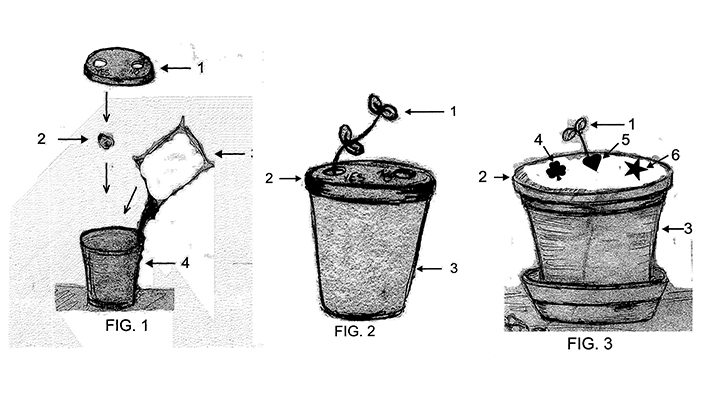
The anti-eating face mask
In her patent filing, inventor Lucy Barmby said that this invention was meant to stop chefs and food-service employees pinching from the plates. Most modern observers will see the padlocked grate strapped to the face and imagine the anti-biting mask worn by Hannibal Lecter in The Silence of the Lambs. (Or they might think, "Diet culture has gone too far.")
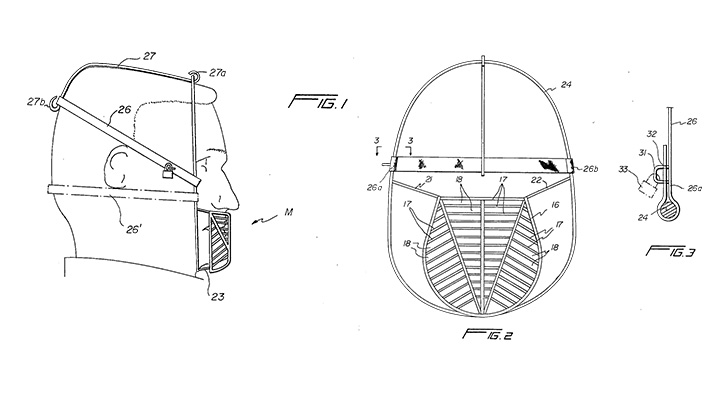
As much as we have poked a bit of fun at the inventions above, more than a few of the most revolutionary devices were considered novelties in their time. Get in touch with the Dennemeyer Group to help your invention on the path to patent protection and secure your innovation's place in history.
*Dennemeyer accepts no responsibility for any social embarrassment or failed Halloween costumes.
Filed in

Grab your warmest jacket and explore the Intellectual Property (IP) behind some of winter travel's shining inventions.



